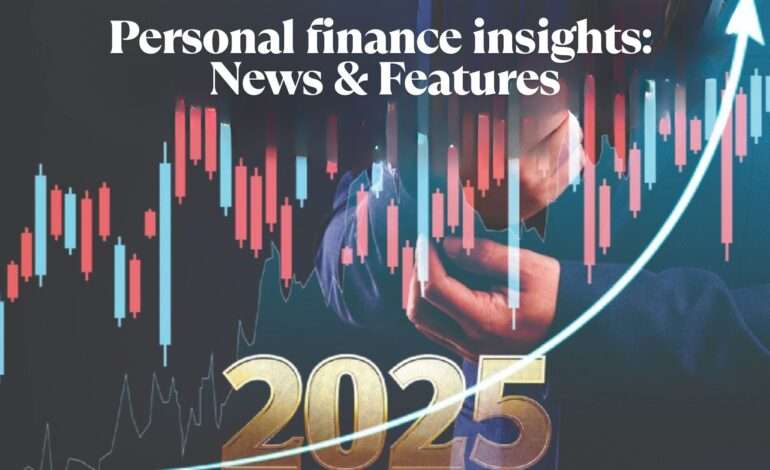
Personal finance insights: News & Features
By: Dr K C Gupta, YBB Personal Finance
SENTIMENTS
AAII Bull-Bear Spread +7.3% (above average)
$NYA50R, NYSE %Above 50-dMA 51.24% (positive, barely)
$SPXA50R, SP500 %Above 50-dMA 49.80% (negative; fast change from overbought)
ICI Fund Allocations (Cumulative), 6/30/25
OEFs & ETFs: Stocks 61.34%, Hybrids 4.14%, Bonds 17.47%, M-Mkt 17.05%
INTEREST RATES
CME FedWatch
Cycle peak 5.25-5.50%
Current 4.25-4.50%
FOMC 9/17/25+ cut
FOMC 10/29/25+ cut
Treasury
T-Bills 3-mo yield 4.35%, 1-yr 3.87%; T-Notes 2-yr 3.69%, 5-yr 3.77%, 10-yr 4.23%; T-Bonds 30-yr 4.81%;
TIPS/Real yields 5-yr 1.39%, 10-yr 1.90%, 30-yr 2.58%
FRNs Index 4.281%
US Savings I-Bonds rate from 5/1/25 – 10/31/25 is 3.98% (previous 3.11%); the fixed rate is 1.10%, the semiannual inflation is 1.43%.
For current banking rates, see www.depositaccounts.com/
Stable-Value (SV) Rates, 8/1/25
TIAA Traditional Annuity (Accumulation) Rates
Restricted RC 5.25%, RA 5.00%
Flexible RCP 4.50%, SRA 4.25%, IRA-101110+ 4.25%
TSP G Fund 4.375% (previous 4.25%).
Weekly ETFs INDA -2.01%, EPI -2.33%, INDH -0.80%, SPY -2.41%
The data above are as of Sunday preceding the publication date.
ECONOMY
India will have stiff 25% US tariffs plus additional policy-related penalties (Russian military equipment & oil, BRICS). More than 50 countries have lower tariffs than India. Electronics remain exempt from reciprocal tariffs. IT services are not included in “goods” tariffs. Secondary sanctions may follow on Russia’s trading partners that include China & India. No disaster yet for Indian rupee or stocks; the GDP impact may be -0.25% to -0.40%. PM Modi said that India’s national interests come first & the public should support indigenous production.
SPECIAL TOPICS
You may have seen the news that the historic East India Company (EIC) that once ruled India is now owned by an Anglo-Indian Sanjiv MEHTA. That’s half-truth. The historic East India Company (EIC) was formally dissolved in 1874. However, collectors & hobbyists kept some memorabilia around – the “East India” signs & labels, trademarks & logos. During 2005-10, Mehta consolidated these hobbyist firms under a new East India Company (EIC) name & started claiming links to the defunct historic EIC. Apparently, the Royal Family & the UK Government didn’t object. However, the UK courts have ruled that the new EIC doesn’t have exclusive rights to “East India” name in businesses or contexts other than those it’s involved in now: commemorative gold & silver coins, luxury goods, gifts, premium tea & coffee, & some foods & beverages.
CRYPTOS (Part 3)
After delays for years, the SEC finally approved several spot-Bitcoin ETPs in 01/2024 – iShares IBIT, Fidelity FBTC, Bitwise BITB, etc. They attracted huge inflows indicating pent up demand. The old Grayscale GBTC trust that converted into ETP kept very high ER & suffered huge outflows.
This was followed by the approval of several spot-Ether ETPs in 05/2024 that began trading in 07/2024 – iShares ETHA, Fidelity FETH, Bitwise ETHW, etc. Grayscale ETHE (conversion from trust) again stuck with high ER.
At first, Grayscale’s strategy of keeping the ERs high for GBTC & ETHE seemed puzzling. But it later introduced lower ER ETFs BTC (Bitcoin) & ETH (Ether) for new investors; it must have reserved those symbols years ago. Its bet was that despite heavy outflows from high ER GBTC & ETHE, many holders with high capital gains will stick with those. So, it earns high fees from long-term holders stuck in its high ER ETFs but is attracting new money with its low ER ETFs. Other firms such as iShares/BLK & State Street/STT have followed similar strategies – in some cases, the lower ER ETFs eventually overtook the higher ER ETF cousins, as would be logical.
Futures-based crypto ETFs are BITO, BTF, BITC, AETH, etc. The ETFs that hold crypto companies (miners, blockchains, exchanges, firms handling cryptos) are BITQ, FDIG, WGMI, BLOK, BKCH, BWEB, etc. These ETFs have existed longer.
Cryptos are very volatile, but some go for even higher volatility with +/- 2x ETPs. Firms offer them in pairs, so they collect fees regardless of whether speculators make or lose money.
Note that ETPs (exchange traded products) cover a broader range of assets than ETFs (exchange traded funds). So, the less common term ETP can be used more generally & includes the more common ETFs, but not so with the term ETF.
After the GENIUS Act became a law (7/18/25), the dollar-asset-backed stablecoins (Tether, USDC, etc) will come into the mainstream finance. The stablecoin accounts have 24/7 access from anywhere in the world & may be great for international travelers. They would also lead to democratization of the dollar in that dollar-backed stablecoins can be held by anyone anywhere.
For more information, see https://ybbpersonalfinance.proboards.com/